Fujitsu AXGS24ABTH-Q Handleiding
Bekijk gratis de handleiding van Fujitsu AXGS24ABTH-Q (2 pagina’s), behorend tot de categorie Airco. Deze gids werd als nuttig beoordeeld door 41 mensen en kreeg gemiddeld 4.4 sterren uit 21 reviews. Heb je een vraag over Fujitsu AXGS24ABTH-Q of wil je andere gebruikers van dit product iets vragen? Stel een vraag
Pagina 1/2

ROOM AIR CONDITIONER
ENGLISH
P/N 9386269094
Before using this product, read these instructions thoroughly and keep this manual for future reference.
To prevent personal injury, injury to others, or property damage, read this section carefully before you use this product, and be sure to comply following
safety precautions.
Incorrect operation due to failure to follow the instructions may cause harm or damage, the seriousness of which is classifi ed as follows:
Refer to the rating label with the serial number.
MADE IN THAILAND
OPERATION MANUAL
Safety Precautions
Care and Maintenance Installation
Troubleshooting
CAUTION
lDuring maintenance, be sure to place the removed components in a safe place to avoid damage to them.
lDo not touch the aluminum fi ns of heat exchanger built-in the indoor or outdoor unit to avoid personal injury when you install or maintain the unit.
Also, pay attention not to be scratched or pinched your hand by inner parts.
lNever use water hotter than 40 °C. The unit body may warp or change color.
lDo not use infl ammable sprays such as lacquer or hair spray near the air conditioner.
The unit can be damaged by gasoline, benzine, thinners, insecticides and other chemical agents.
lBefore cleaning the unit, be sure to turn it off and all the power supply has been disconnected.
Cleaning the Air Filter
If dirt is allowed to collect in the air fi lter, the airfl ow will be reduced, leading to reduced performance, and increased operating noise. Be sure to clean the
fi lters at the beginning of the operating season, and about every 2 weeks during periods of frequent operation.
The air fi lter is attached to the front panel, and you need to remove the intake grille fi rst, when you get access to the air fi lter.
Cleaning the unit
Clean the unit by wiping with a cloth moisten with cool or warm water, then wipe with another soft, clean, and dry cloth.
When not using the unit for extended periods (1 month or more)
Operate the unit on fan mode for about one-half day on a day with clear weather, to assure that the internal parts are dry.
When not using the unit for extended periods, turn off the electrical breaker or disconnect the power plug for safety.
Check the power cord
lRemove the built-up dirt and dust on the power plug and the electrical outlet periodically.
lCheck the power cord occasionally to confi rm that it is not damaged by cuts or abrasions. If you discover damage to the cord, consult authorized service
personnel.
Intake grille removal
Front panel removal
Air fi lter cleaning
Front panel installation
Air fi lter installation
Air fi lter removal
Push the bottom of the intake grille up with your hand, and pull it toward you.
1. Remove one screw securing
the front panel.
2. Push the small projections on the bottom side of the front panel
upward to unlatch the lower side.
Then with holding up the front panel with your hands, remove it toward
you.
Use a vacuum cleaner to remove dust and dirt from the air fi lter, or wash in
a synthetic detergent. After washing, dry in a shaded place, then reinstall.
1. Hook the upper edge of
the front panel (2 places)
to the unit.
2. Press the lower edge of the front panel, and secure it with the screw.
To attach the fi lter to the front panel, with aligning the both sides of the fi lter
to the front panel, insert the upper edge of the fi lter to the rail on the front
panel. Then make sure that the lower edge of the fi lter is fi rmly inserted to
the rail too.
The air fi lter can be installed either way up.
After attaching the air fi lter, reinstall the intake grille.
With lifting up small tabs on the air fi lter, pull the fi lter toward you.
Inspections and repairs:
Depending on the conditions of use, the internal parts of an air conditioner will become dirty after about two or three season of use, and performance
may be affected. For this reason, regular professional maintenance is recommended. Consult authorized service personnel.
Controller Position Description
THERMOSTAT 1–10
As the knob is turned clockwise the
higher numbers on the dial indicate
lower temperature.
MASTER
CONTROL
(OFF) The air conditioner is switched off.
(FAN)
Fan only operates at MED speed,
without cooling room air is circulated
and cleaned.
(SUPER
QUIET)
Fan (Low speed) and compressor
operate at quiet cooling.
(NORMAL) Fan (Medium speed) and compressor
operate at intermediate cooling.
(HIGH
POWER)
Fan (High speed) and compressor
operate at rapid cooling.
SUPER WAVE
ON
Horizontal airfl ow louvers continuously
change the direction of airfl ow. When
the master control knob is set to “OFF”,
the SUPER WAVE does not operate.
OFF
Horizontal airfl ow louvers stop enabling
airfl ow to be directed in any desired
direction.
Vertical airfl ow louvers
Horizontal airfl ow louvers
Air inlet
Front panel
Intake grille
Air fi lter Power supply plug
Screw
Control panel
Operation
Unit Overview
Cooling
To obtain maximum cooling effect in the hot summer select position HIGH POWER on the master control. Maximum moisture removal, air circulation and
dust removal are effected at the same time.
Selection of SUPER QUIET reduces operating noise.
Air Circulation
An adequate fl ow of air is very important for comfort. When the master control knob is set at “FAN” position, the fan only is actuated so that the air is fi ltered
and circulated without cooling effect.
Air circulation only without cooling effect may also be achieved with the thermostat knob turned counterclockwise to “1” position and with the master control
at either “HIGH POWER” or “SUPER QUIET” position.
Thermostat Control
The thermostat is set by means of the thermostat control. When the room temperature is higher than the thermostat setting, the compressor is
automatically switched on to provide a cooling effect. When the room temperature is lower than the thermostat setting, the compressor is automatically
switched off to stop cooling.
It can be seen therefore, that the thermostat serves to keep the room temperature constant by causing the compressor to start and stop automatically.
1. When you wish to lower the temperature, turn the thermostat control clockwise in the direction of the higher numbers on the dial.
2. When you wish to increase the temperature, turn the thermostat control counterclockwise in the direction of the lower numbers.
3. When the thermostat is set at positions “5”, “6”, or “7”, comfortable room temperatures can usually be obtained. Note that it is unhealthy for the room
temperature to be lower than approximately 22 °C.
4. When the thermostat control is positioned at “10”, the room-side fi n coil may freeze up due to excessively low room temperature (for example, below
18°C) caused by low outdoor temperature at night.
Once the fi n coil becomes frozen, the airfl ow from the air conditioner is restricted by the frost, and the room temperature may rise due to the resultant
weak cooling performance of the air conditioner.
5. The thermostat positions “8”, “9”, and “10” can be used when the room temperature does not become suffi ciently low. This condition may occur when the
thermostat switches off automatically because cooled air, when it passes through the vertical airfl ow louvers positioned downwards and the horizontal
airfl ow louvers positioned to the left, makes a short circuit and the recirculated air touches the sensor of the thermostat.
Note: The thermostat controls the compressor only and accordingly the fan is constantly circulating air even during the period when the compressor is off.
Important: When restarting the cooling operation after it has been turned off by either master control of thermostat, be sure to allow at least 3 minutes.
If cooling operation is restarted immediately after it is turned off, an over current will fl ow through the compressor motor and the safety
device will be actuated. If the safety device is actuated it will not be possible to restart the compressor motor for about 20 minutes.
Air Direction Control
When the SUPER WAVE switch is turned to “ON” position, the horizontal airfl ow louvers is automatically actuated and sweeps the jet of air alternately, left
and right and thus more effective cooling will be obtained.
The louvers may be stopped at any position when SUPER WAVE switch is turned off.
Installation dimension
Typical installation
Installation hole
455–460
Unit 455
Unit 710
600
or more
200
or more 200
or more
Wall
Wall
Unit: mm
Unit 670
Installation hole 670–673
Drain tube
(Outer diameter: 16)Φ
Condenser air inlet louvers Fit fl ashing or insert caulking compound
behind top outside architrave.
Recommended architrave
57 mm (2 1/4”)×13 mm (1/2”)
tapering to 8 mm (5/16”)
typical all round on front and
rear of unit.
Timber frame–typical all
round on front and rear of
unit.
50 mm (2”)×6 mm (1/4”)
sponge rubber strip–typical
all round on front and rear
of unit.
Condenser air inlet louvers
must be completely clear of
outside architrave surface.
Front panel
Attach fi eld supplied cabinet support brackets
to the cabinet and the wall, it is required.
5-10 mm
Recommended height:
750-1500 mm from the
fl oor
In the event of a malfunction (burning smell, etc.), immediately
stop operation, turn off the electrical breaker or disconnect the
power plug, and consult authorized service personnel.
In the place where bears be suffi cient to the weight of the air
conditioner concerning installation, noise and vibration choose
such place without increasing.
For installation, avoid any places in direct sunlight. Combined
installation with a sunshade is recommended; installing the unit
under direct sunlight may cause low cooling performance or
increasing of the electricity consumption.
Consult the installation in a special place to a selling agent.
Because sea breeze sometimes becomes to a cause of
malfunction by corrosion etc., in the case that the place become
use with machine oil, the place of many place etc., that occur,
sulfuration gas such as a hot spring area that hits in a seashore
area it buys and give consultation to that selling agent.
Avoid the neighbourhood that be discharged dust, a lampblack,
steam, such as an exhaust port, a ventilation fan.
It is place where do not give neighbours trouble about removal
water or a wind and noise.
Where practicable, locate the air conditioner with the lower edge
of the cabinet approximately 0.75 m (29.5”) to 1.5 m (59”) from
the fl oor. This usually gives the optimum air circulation pattern
within the room for cooling and heating.
When installing the attached insulation (620 mm x 40 mm, t12),
insert it from the inside of the room so that the insulation fi lls up
the gap between the rails on the inner bottom of the cabinet and
bottom side of the base.
Before requesting service, perform the following checks:
Symptom Problem
NORMAL
FUNCTIONS
Noise is heard: During operation and immediately after stopping the unit, the sound of water fl owing in the air
conditioner’s piping may be heard. Also, noise may be particularly noticeable for about 2 to 3
minutes after starting operation (sound of coolant fl owing).
During operation, a slight squeaking sound may be heard. This is the result of minute expansion and
contraction of the front cover due to temperature changes.
Smells: Some smell may be emitted from the unit. This smell is the result of room smells (furniture, tobacco,
etc.) which have been taken into the air conditioner.
Mist or steam are emitted: During cooling operation, a thin mist may be seen emitted from the unit. This results from the sudden
cooling of room air by the air emitted from the air conditioner, resulting in condensation and misting.
CHECK ONCE
MORE
Does not operate at all: Is the power plug disconnected from its outlet?
Has there been a power failure?
Has a fuse blown out, or a circuit breaker been tripped?
Poor cooling performance: Is the air fi lter dirty?
Are the air conditioner’s intake grille or outlet port blocked?
Did you adjust the room temperature settings (thermostat) correctly?
Is there a window or door open?
In the case of cooling operation, is a window allowing bright sunlight to enter? (Close the curtains.)
In the case of cooling operation, are there heating apparatus or computers inside the room, or are
there too many people in the room?
If the problem persists after performing these checks, immediately stop operation, turn off the electrical breaker or disconnect the power plug, and consult
authorized service personnel.
a
a
Power Supply
WARNING
This mark warns of death or serious injury.
WARNING
lDo not attempt to install this air conditioner by yourself.
lThis unit contains no user-serviceable parts. Always consult authorized
service personnel for repairs.
lWhen moving, consult authorized service personnel for disconnection
and installation of the unit.
lDo not become over-exposed to cold air by staying in the direct path of
the air fl ow of the air conditioner for extended periods of time.
lDo not insert fi ngers or objects into the outlet port or intake grille.
lDo not start and stop air conditioner operation by turning off the
electrical breaker or disconnecting the power supply plug and so on.
lTake care not to damage the power supply cord.
lDo not modify the power cables, use extension cables, or use any
branches in the wiring. Improper connections, insuffi cient insulation, or
exceeding the allowable current can cause electric shock or fi re.
lDo not bundle the power supply cable.
lIn the event of a malfunction (burning smell, etc.), immediately stop
operation, turn off the electrical breaker or disconnect the power
supply plug, and consult authorized service personnel.
lAlways turn off the electrical breaker or disconnect the power supply
plug whenever cleaning the air conditioner or the air fi lter.
lThis appliance is not intended for use by persons (including children)
with reduced physical, sensory or mental capabilities, or lack of
experience and knowledge, unless they have been given supervision
or instruction concerning use of the appliance by a person responsible
for their safety. Children should be supervised to ensure that they do
not play with the appliance.
lIf you see lightning or hear thunder, there might be a lightning
strike. To prevent electric shock hazard, stop the operation of the
air conditioner, and do not touch the unit or the power plug during
thunderstorm.
CAUTION
lProvide occasional ventilation during use.
lDo not direct airfl ow at fi replaces or heating apparatus.
lDo not climb on, or place objects on the air conditioner.
lDo not hang objects from the unit.
lDo not set fl ower vases or water containers on top of air conditioners.
lDo not expose the air conditioner directly to water.
lDo not operate the air conditioner with wet hands.
lDo not pull power supply cord.
lTurn off power source when not using the unit for extended periods.
lCheck the condition of the installation stand for damage.
lDo not place animals or plants in the direct path of the airfl ow.
lDo not drink the water drained from the air conditioner.
lDo not touch the aluminum fi ns of heat exchanger built-in the indoor or
outdoor unit to avoid personal injury when you install or maintain the unit.
lDo not use in applications involving the storage of foods, plants or
animals, precision equipment, or art works.
lDo not apply any heavy pressure to radiator fi ns.
lOperate only with air fi lter installed.
lDo not block or cover the intake grille and outlet port.
lEnsure that any electronic equipment is at least 1 m away from the unit.
lAvoid installing the air conditioner near a fi replace or other heating
apparatus.
lWhen installing the unit, take precautions to prevent access by infants.
lDo not use infl ammable gases near the air conditioner.
CAUTION
This mark warns of injury or damage to property.
WARNING
lWiring connections must be performed by a qualifi ed person in accordance with the specifi cations. The voltage rating for this product is 220-240V at
50Hz. It should be operated with the range of 198 to 264V.
lThis air conditioner must be connected to a power source that has an electrical impedance of 0.164 or less or has a supply current of 100 A orΩ
greater. If the power supply does not meet the specifi cations, contact the power company.
lIn order to enable effi cient and trouble-free operation of your air conditioner, connect supply main of your air conditioner through an exclusive circuit,
having a time delay fuse, to the correct power supply described on the rating plate.
lThe circuit breaker with all pole disconnection must be incorporated in permanent wiring.
lIf the power supply cord is damaged, it must be replaced by the manufacturer, its service agent, or similarly qualifi ed persons in order to avoid a hazard.
lThis appliance shall be installed in accordance with national wiring regulations.
Connect BROWN line of the power supply cable to the “Live” terminal of the power outlet, and the earth (ground)
line (GREEN and YELLOW) to the earth (ground) terminal.
Remaining line should be connected to the neutral terminal of the power outlet.
When constructing a timber frame, arrange so that the outside rear of the air
conditioner is between 5 and 10 mm lower than the front of the unit.
This allows condensed water to drain off outside the room.
If the inside of the air conditioner is lower, condensed water and rain may fl ow
into the room.
80 or less 300 or more
Sunshade
BLUE
N
L
GREEN/YELLOW
BROWN
Power supply cable
Product specificaties
| Merk: | Fujitsu |
| Categorie: | Airco |
| Model: | AXGS24ABTH-Q |
Heb je hulp nodig?
Als je hulp nodig hebt met Fujitsu AXGS24ABTH-Q stel dan hieronder een vraag en andere gebruikers zullen je antwoorden
Handleiding Airco Fujitsu

15 Mei 2025
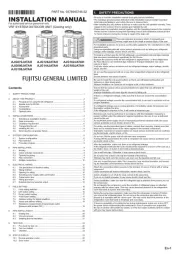
14 Mei 2025
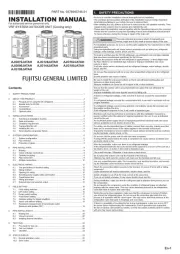
14 Mei 2025
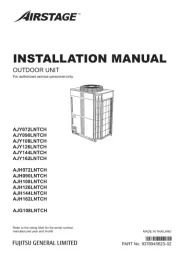
14 Mei 2025
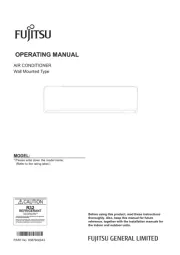
12 Mei 2025
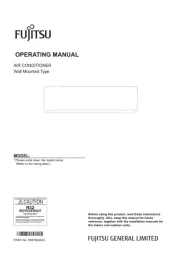
12 Mei 2025

3 April 2025

29 Maart 2025

24 Februari 2025

24 Februari 2025
Handleiding Airco
- Everglades
- Vestel
- Soler And Palau
- Karcher
- Carson
- Trisa
- Bosch
- Corona
- Balay
- Defy
- Unold
- BOSFOR
- Calor
- Oceanic
- Candy
Nieuwste handleidingen voor Airco
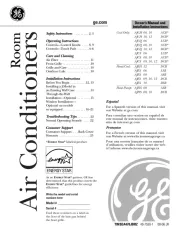
9 September 2025
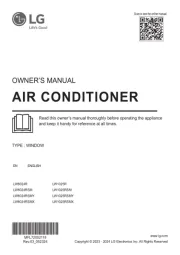
8 September 2025
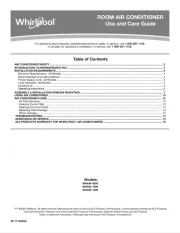
8 September 2025
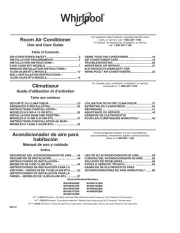
8 September 2025
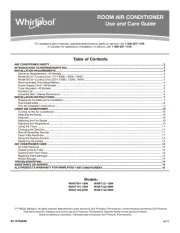
8 September 2025
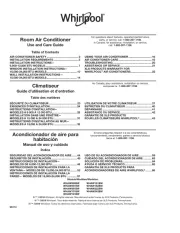
8 September 2025
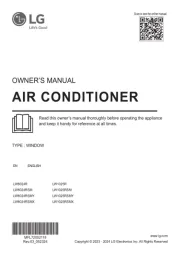
8 September 2025
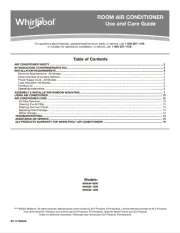
8 September 2025
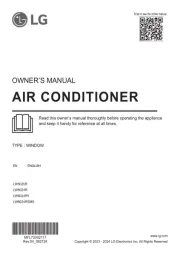
8 September 2025
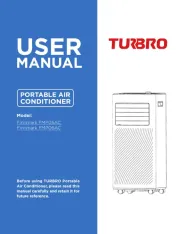
8 September 2025